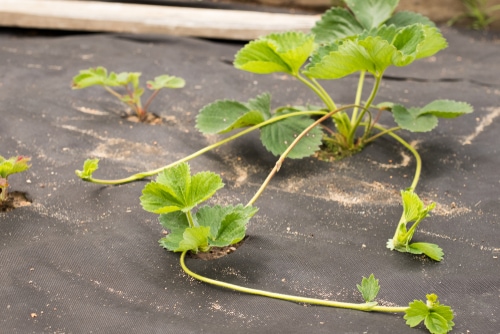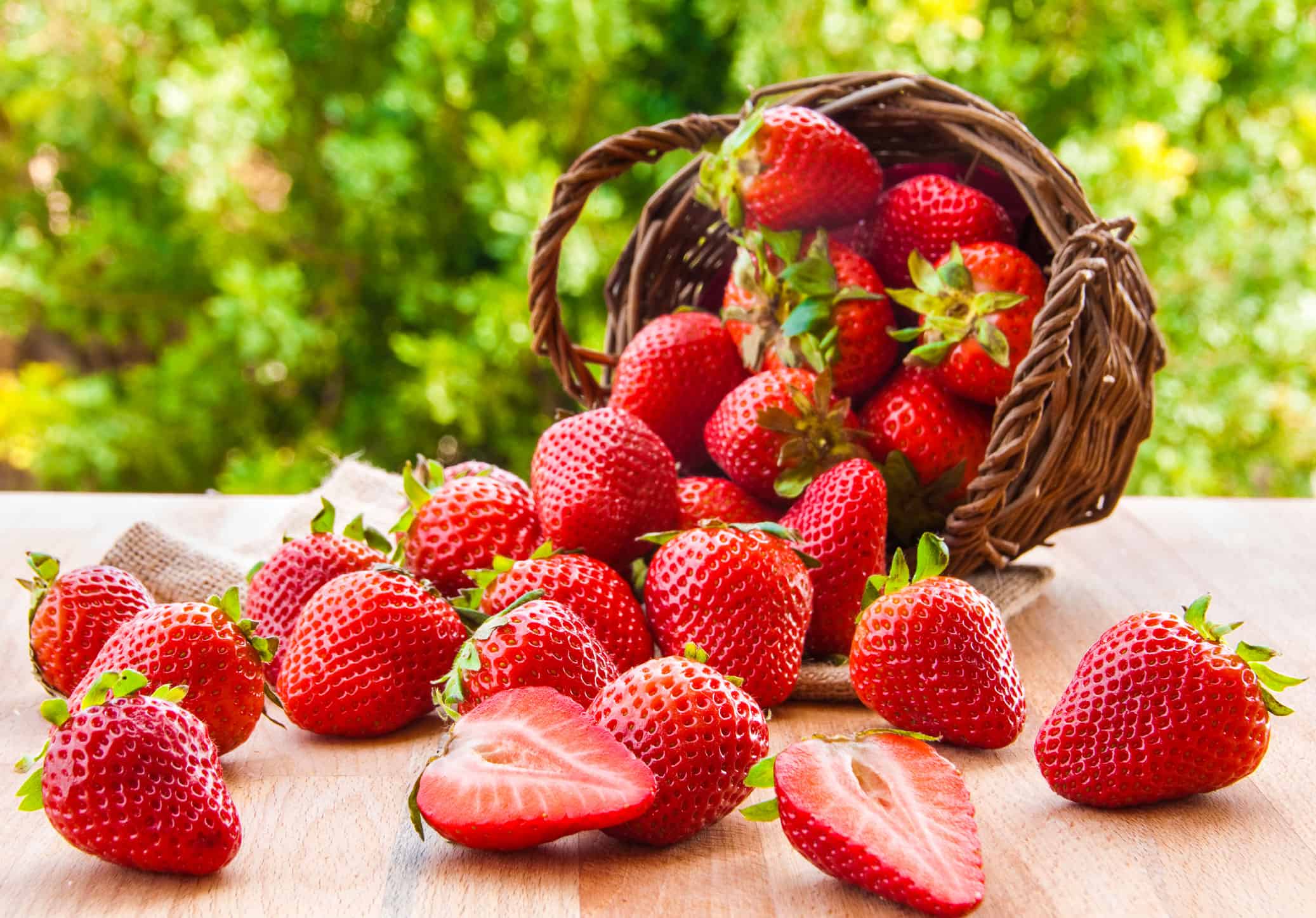Strawberries are a delicious fruit to grow and enjoy wherever you may reside. Purchasing strawberries from grocery stores can be stressful because of the mold and damage that may develop. Strawberries can be expensive or hard to obtain depending on the time of year; however, growing your own in Georgia can be fun and rewarding for all-level gardeners. To successfully grow strawberries, we must understand proper maintenance and their surrounding environment. This article will discuss how one can successfully grow strawberries in the state of Georgia.
Georgia’s Weather and Climate
Similar to most states, Georgia can experience weather and seasons differently. For example, in western Georgia, the climate is sub-tropical and humid. Heavier rainfalls in this area usually occur in the fall and winter, whereas eastern Georgia experiences heavier rain in the spring. Because of the humidity in Georgia, the temperatures are a bit higher than in states in the north. The table below lists the average temperature experienced in each season.
| Season | Temperature |
| Spring | 80-90 degrees Fahrenheit |
| Summer | 50-80 degrees Fahrenheit |
| Fall | 50-60 degrees Fahrenheit |
| Winter | 50-60 degrees Fahrenheit |
Another thing to understand about the climate in Georgia is when the first and last frost of the year begins. The first frost definition is the appropriate time to harvest plants or bring them indoors for protection from the cold temperatures of winter. The last frost definition is when the time is safe to plant again and the winter frost has disappeared. Each region in Georgia may vary in when the first or last frost occurs. For example, in Atlanta, Georgia, the last frost occurs around April 5th, whereas the first frost occurs around October 22nd. In Albany, Georgia, the last frost occurs around March 31st, whereas the first frost begins around October 25th. Although these time frames are close in range, understanding them will help determine when and where it is appropriate to plant your strawberries.

The state of Georgia has the perfect conditions for growing fruit like strawberries.
©Alexander Lukatskiy/Shutterstock.com
The Hardiness Zone
The last bit of information to understand is the hardiness zone that you live in. The hardiness zone is a map that’s useful for gardeners to determine which plants are more likely to thrive in a given location. The map utilized alongside the first and last frost timeline will help strawberries grow successfully. Georgia as a whole has a hardiness zone range of six through nine. North and central Georgia’s hardiness zones are between six and eight, whereas south Georgia has a hardiness zone of nine.
Strawberry Care
For strawberries to grow, proper care and maintenance is a must. Strawberries do not respond well to cool, damp weather with no sun; however, preparing for this type of weather can protect your plants. This fruit does well in hardiness zones between three and ten. This section will list recommendations for properly growing your strawberries.
- Maintain a soil pH of 5.5-7. A soil moisture meter or pH soil tester is a tool designed for this task.
- Avoid planting strawberries where tomatoes, potatoes, and peppers previously grew. Doing so can cause strawberries to develop root disease.
- Seeds should be in an environment of at least 50 degrees Fahrenheit. Strawberry seeds do not grow well in the cold.
- Indoor strawberries are maintained at sixty to seventy degrees Fahrenheit to promote germination. Germination is the development of a plant from a seed to a spore. For strawberries to grow or germinate, a warm environment is needed.
- Indoor strawberries should be under a grow lamp or in a sunny area for twelve hours per day. Although strawberries love the sun, too much sun can dry them out. For days of constant cloud cover, a grow lamp can substitute for the need for sun.
- Use a high-quality starting mix that drains well. There are many starter soils to select from; however, the brand, “10-10-10, is a good choice for strawberries.
- Indoor seeds. Indoor seeds should be planted in early spring or several weeks before the last frost.
- Outdoor seeds. Outdoor seeds should be planted late winter into early spring or six to eight weeks before the last frost

Soil that is rich in nutrients and has good drainage is important for strawberries to grow.
©malshkoff/Shutterstock.com
When Do Strawberries Bloom?
There are over one hundred strawberry species to choose from; however, certain kinds thrive better in Georgia. We will discover what those species are later in the article. Typically strawberries can take around three months to bare fruit. The chart below lists the common types of strawberries and their average bloom time.
| Species type | Bloom time |
| Earliglow | 2-3 weeks |
| Honeoye | 4-5 weeks |
| Chandler | 4-5 weeks |
| Jewel | 5-6 weeks |
| Seascape | 5-6 weeks |
| Allstar | 5-6 weeks |
| Albion | 5-6 weeks |
| Ozork beauty | 6-7 weeks |
| Quinault | 6- 7 weeks |
| Tribute | 6-7 weeks |
Strawberry diseases
Whatever your gardening level skill may be, it is imperative to be able to detect diseases that strawberries can contract. The first start to avoiding diseases in your strawberry plant is obtaining seeds or plants that are healthy. Seeds or plants that are already infected can make the growing journey of your plant challenging. Keeping up with possible weather changes can prepare you to take protective measures for your plant. Proper fertilization and soil will help your plant become resistant to diseases. The list below will include common diseases that strawberries can contract.
- Rhizoctonia and crown rot. Root rot can occur during the cooler months, whereas crown rot worsens during the warmer months. A sign of this disease is a patchy appearance in the flower bedding. Soil fumigation can help control this organism.
- Phomopsis leaf blight. This disease develops in the fall or springtime shortly after planting. Signs of this disease are the development of round, pink, water-soaked spots on the leaves. Applying fungicides during new growth and removing dead plants can help rid of this problem.
- Botrytis fruit rot. This disease can start on the sides of strawberries and infect other plants. If your fruit starts turning light brown, this can be the start of the disease. This disease loves wet weather; however, using protective fungicide sprays year-round can help avoid this occurrence.
- Angular leaf spot. This disease will leave small, angular, water-soaked spots on the bottom of the leaves. This disease flourishes in wet weather with a temperature of seventy degrees Fahrenheit. This will usually go away as temperatures increase in the springtime.

Here in this photo, you can see the difference between a healthy strawberry plant vs. a diseased plant.
©Lertwit Sasipreyajun/Shutterstock.com
Growing Strawberries in Georgia
With all of the information we have gathered on strawberries and the climate in Georgia, it is time to plant our strawberries. Northern and central Georgia’s hardiness zone is six through eight, whereas south Georgia’s hardiness zone is nine. Strawberries should be planted during spring after the last frost; however, this can be different when deciding to place them indoors or outdoors. The chart below lists when to plant strawberries based on the hardiness zone.
| Zone | Indoor | Outdoor |
| 6 | Feb. 24th | March 31st |
| 7 | Feb. 6th | March 13th |
| 8 | Jan. 31st | March 7th |
| 9 | Jan. 3rd | Feb. 7th |
If you are planning to grow your strawberries outdoors, there are two types of growing systems or methods in Georgia to help strawberries thrive. The “Matted Row” system is recommended in northern Georgia and the “Annual Hill” system is used in all other regions of Georgia. The following sections will list the instructions on how to perform each method.
The Matted Row System
- Amend the soil. Check soil level for pH levels of 5.8-6.2. Next, lower the pH level by adding aluminum sulfate or sulfur to the ground. Increase the pH by adding wood ashes or limestone.
- Weed removal. Remove any weeds and add two inches of manure.
- Fertilize. During the springtime, add fertilizer to the soil and dig holes that are eighteen to twenty-four inches apart.
- Water. Plants should receive one to one in a half inches of water each week. Flowers and runners, a branch or twig springing from the root, should be cut during the first spring.
The Annual Hill System
- Fertilize. Apply fertilizer and use pine straw as mulch in the garden bedding.
- Placement. Place strawberry plants into the garden bed twelve inches apart with a width of twenty-two inches in between beds.
- Water. Water each plant in the first one to two weeks.

The strawberry plant in this photo has runners that are ready to be trimmed.
©Elena Masiutkina/Shutterstock.com
Where to Grow Your Strawberries?
Certain types of strawberries thrive better in different regions of Georgia. We know when to plant strawberries in Georgia, but which species should be grown where? The chart below lists the best types of strawberries to grow in Georgia and what specific regions. The Chandler, Camarosa, and Sweet Charlie variants are only to be planted using the annual row system to avoid anthracnose disease. The other variant of strawberries can use either one of the growing methods.
| Variant Types | Region of Georgia |
| Earliglow and Delmarva | North and mid |
| Allstar | north and south |
| Chandler and Sweet Charlie | north, mid, and south |
| Camarosa | mid and south |
Conclusion
In conclusion, strawberries generally thrive well in regions with a hardiness zone between three and ten. Based on this information, it is safe to say that strawberries in any location in Georgia should do well. Georgia’s weather and climate are suitable for strawberries to grow in; however, be mindful of potentially threatening weather that could stunt the life of your plants. A ripe strawberry will be evenly colored, firm to the touch, sweet, and juicy. A ripe strawberry means it is ready to harvest. When you are ready to transfer your indoor plant to be outdoors, do so by exposing them outdoors for a few hours per day. After about one to two weeks, your plant should be ready to be an outdoor plant. Enjoy watching your strawberries grow and enjoy the fruits of your labor.

Thank you for reading! Have some feedback for us? Contact the AZ Animals editorial team.








